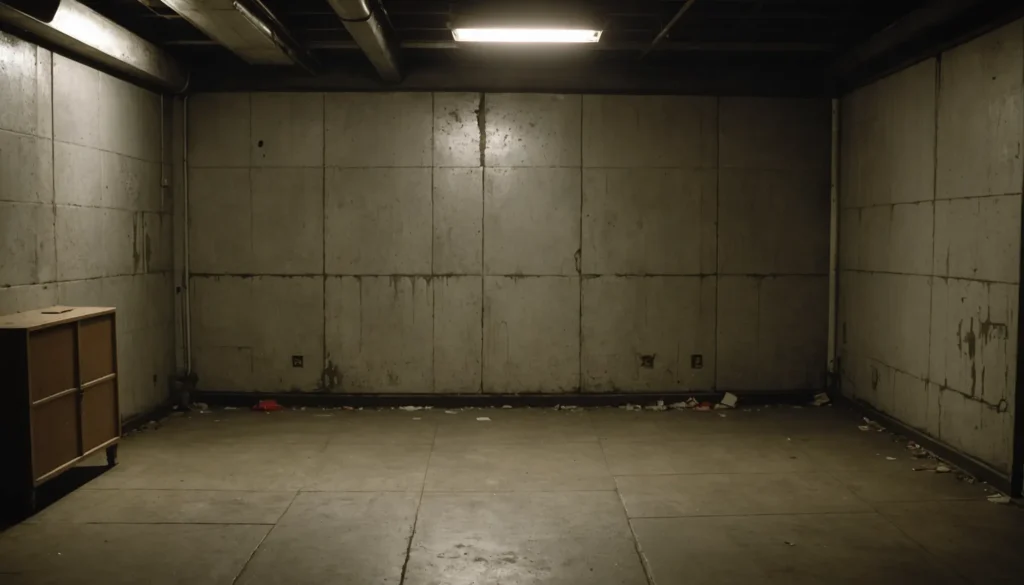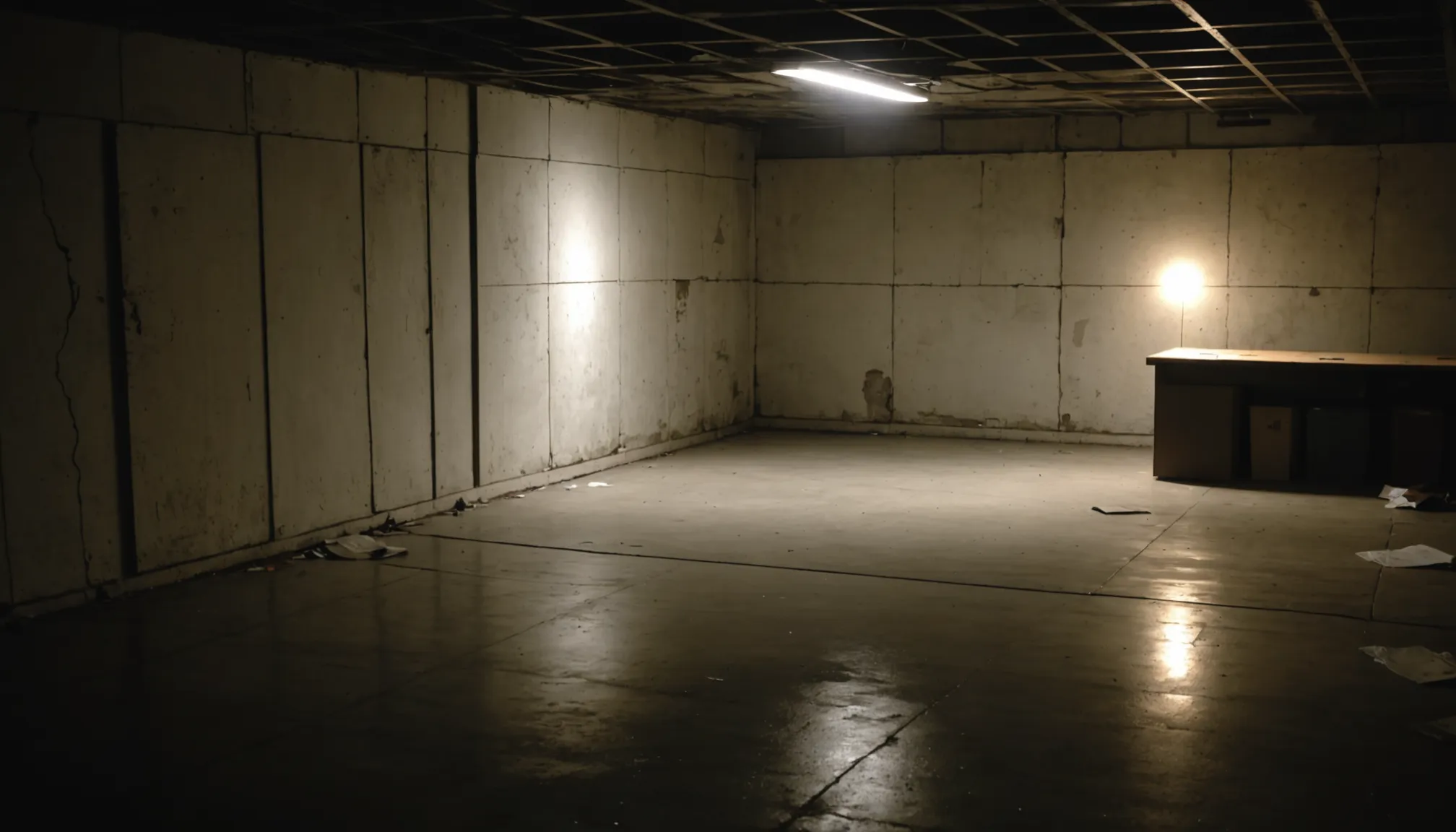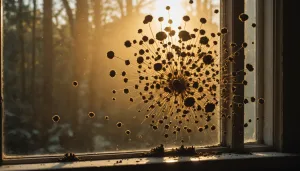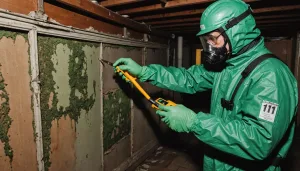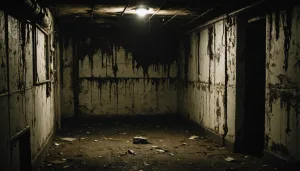Mold can be an unwelcome guest in many homes, often thriving in areas you may not expect. To effectively combat mold problems, it is crucial to understand the common places where it tends to grow and why these environments are conducive to its spread. By being aware of these typical hotspots, homeowners can proactively monitor and address potential mold issues before they escalate.
One of the primary conditions mold needs to flourish is moisture. This is why bathrooms are notorious for mold growth, particularly around shower stalls, under sinks, and on grout lines. The consistent use of water and high humidity levels create an ideal breeding ground. Similarly, kitchens, with their abundance of water sources—from sinks to dishwashers—are also prone to mold, especially in areas where leaks might occur or near the garbage disposal.
Basements are another common place where mold can thrive. Due to their position below ground level, basements often suffer from dampness and poor ventilation, both of which contribute to mold growth. Homeowners should pay particular attention to any water intrusion stemming from foundation leaks or basement windows. Additionally, upholstery, cardboard, and other organic materials stored in damp basements can become mold-infested over time.
In terms of household ventilation, attics can be particularly troublesome. Without proper airflow, moisture from the rest of the house can accumulate, especially during colder months when condensation forms from warm, damp air hitting cooler surfaces. Leaky roofs or pipes add another layer of risk, and insulation can become a hidden repository for mold.
Windowsills and frames are often overlooked. Condensation frequently builds up during colder seasons, acting as a persistent moisture source. Mold is likely to appear on the caulking or the wooden frame if these areas are not regularly wiped down and monitored for consistent airflow. Even living rooms can harbor mold, especially around HVAC systems and air conditioners, which, if not maintained regularly, can introduce moisture to otherwise dry environments.
Finally, closets can become surprising mold habitats, particularly if they are adjacent to exterior walls that may wick moisture inside, or if wet clothing or shoes are stored in them. The darkness and lack of ventilation in closets make them perfect environments for mold if moisture is present.
| Location | Moisture Source | Prevention Tips |
| Bathroom | Showering, leaks | Use exhaust fans, regularly clean grout |
| Kitchen | Sinks, dishwashers | Fix leaks promptly, ensure proper ventilation |
| Basement | Humidity, leaks | Use dehumidifiers, check for water intrusion |
| Attic | Condensation, leaky roof | Ensure proper roof insulation and ventilation |
| Windowsills | Condensation | Wipe down regularly, inspect seals |
| Closets | Moist clothes or shoes | Keep doors open for airflow, ensure dryness |
Awareness and proactive management of these common areas can significantly reduce the potential for mold. Staying vigilant about moisture and routinely inspecting these vulnerable areas can prevent the costly and health-damaging effects mold might bring to your living environment.
visible signs of mold presence
Mold doesn’t always hide in the shadows; sometimes, it makes its presence quite evident. Knowing the visual indicators of mold can help you address problems swiftly, minimizing health risks and structural damage. Here are a few signs to keep an eye out for in your home:
1. Discoloration on Surfaces: Mold often appears as black, green, gray, or white spots and can be found on walls, ceilings, or floors. It may look like small clusters of spots or larger patches. Even if it’s just a slight discoloration, it’s worth having it checked out, as it might indicate a deeper issue behind the surface.
2. Peeling or Bubbling Paint: If you notice paint peeling away from walls or bubbling, it could be an indication of persistent moisture or water damage, both of which can encourage mold growth. It’s essential to inspect not only the surface but also the area behind it for any mold development.
3. Musty or Moldy Odor: One of the most distinctive signs of mold is a persistent earthy or musty smell. This odor may be noticeable even if you can’t see any visible mold. It is often more pronounced in enclosed or poorly ventilated spaces and can indicate a hidden mold problem.
4. Surface Texture Changes: Walls or ceilings that feel damp or soft to the touch may suggest underlying mold growth. Wood surfaces, in particular, may exhibit warping or feel spongy, which can be a sign of mold activity beneath the surface.
5. Previous Water Damage: Areas of your home that have previously experienced flooding, leaks, or high humidity are more likely to develop visible mold. Old stains on ceilings or walls can potentially harbor mold, so even if they seem dry, it’s worth investigating further.
6. Tile Grout Discoloration: In bathrooms and kitchens, mold can often appear as discoloration in tile grout. While this might initially seem like dirt, the persistent presence and expansion can indicate mold.
7. Furniture and Upholstery Issues: Mold can also grow on organic materials like wood and fabrics. Look for signs of mold on furniture, especially in humid conditions or if the furniture is close to a wall with a known moisture issue. Upholstery may become spotted or give off an unpleasant odor if mold is present.
8. Window Frames and Sills: Check for mold on windowsills and frames where condensation frequently collects. Black or green spots can form around damp areas and should be cleaned promptly to prevent spreading.
9. Wall Cavities and Ventilation Systems: Sometimes mold is hidden in less accessible places like within wall cavities or ducts. You might notice black dust around air vents that could indicate mold development, which necessitates a thorough inspection by a professional.
10. Plant Soil: Mold can also grow on the soil of houseplants. While usually harmless, if continuously neglected, mold from plant soil can spread to nearby surfaces, contributing to indoor air quality issues.
Being proactive when you notice these signs is vital. Contact a professional for an accurate assessment if you’re unsure. Prompt attention to these visible signs will help mitigate the challenges and health risks associated with mold in your home.
health symptoms to watch for
Mold presence in your home can often go unnoticed until it begins to impact your health. Understanding the health symptoms associated with mold exposure is crucial for identifying and solving mold-related issues. Mold can affect every individual differently, particularly those with preexisting health conditions, allergies, or weakened immune systems. Here are some health symptoms that could suggest a mold problem within your home environment:
1. Respiratory Issues: One of the most common reactions to mold exposure is respiratory distress. This can range from chronic coughing and sneezing to wheezing and shortness of breath. Mold spores inhaled into the lungs can irritate the respiratory tract, leading to persistent coughing or exacerbating existing asthma symptoms.
2. Allergic Reactions: Mold is a notorious allergen. Exposure might provoke symptoms similar to a common allergy attack, such as runny or stuffy nose, itchy throat, watery eyes, and skin rashes. These symptoms might intensify in particularly moldy environments or during seasons when mold counts are higher.
3. Sinus Congestion: If you’re experiencing clogged sinuses that don’t seem to clear up, mold might be the underlying cause. Mold exposure can contribute to persistent sinus infections and even lead to sinusitis, characterized by facial pressure, headaches, and nasal obstruction.
4. Skin Irritation: Contact with mold can lead to skin reactions. Those with sensitive skin might develop rashes or experience itching and irritation. This condition is especially common in mold-infested areas like bathrooms where skin directly contacts moldy surfaces.
5. Eye Irritation: Red, watery, or itchy eyes are another prevalent symptom. Mold spores can irritate the eyes, causing discomfort and a sensation of grittiness, which is often mistakenly attributed to dry eye or seasonal allergies.
6. Fatigue: Many people living in mold-infested homes report feeling unusually fatigued. This chronic tiredness, often disregarded as regular day-to-day fatigue, can be exacerbated by poor air quality due to mold.
7. Headaches: Exposure to mold can also lead to headaches. These might be more frequent and possibly accompanied by light sensitivity or nausea, similar to migraine symptoms, especially in individuals sensitive to mold.
8. Worsening of Asthma: If you or a family member has asthma, exposure to mold can lead to more severe symptoms, such as increased frequency and severity of asthma attacks. Mold exposure can cause airways to become more inflamed, making breathing difficult.
9. Nervous System Effects: In some rare cases, individuals may experience dizziness, difficulty concentrating, or confusion. These are serious symptoms and should be addressed immediately by consulting with a healthcare professional.
Recognizing these health symptoms can be a critical first step in identifying a hidden mold problem that might not be visible. If you or anyone in your household is experiencing a combination of these symptoms, it may be time to investigate for mold presence. Addressing potential mold exposure can help alleviate these health concerns and improve your overall living conditions. It is recommended to consult with medical professionals and mold remediation experts to safely and effectively tackle the problem.
testing for mold in your home
When it comes to detecting mold in your home, testing can play a vital role, especially if visual inspections and your health symptoms suggest a mold problem, but the source remains elusive. There are multiple approaches to testing for mold, each with its own set of tools and methods, which can provide clarity and guide your next steps in managing mold issues effectively.
One straightforward method is a do-it-yourself mold test kit, widely available at home improvement stores. These kits typically involve using petri dishes to collect airborne mold spores over short periods. After collection, the samples can be sent to a laboratory for analysis. While convenient and relatively inexpensive, it’s crucial to remember that DIY kits may not capture hidden mold or provide information on the spore concentration that could signify a dangerous level of exposure.
Another option is to hire a professional mold inspector. These trained experts can conduct more comprehensive inspections, combining visual assessments with moisture-detecting instruments and air sampling. Professionals often use tools like hygrometers to measure humidity levels, infrared cameras to detect moisture in walls, and borescopes to inspect hard-to-reach places. They then collect air or surface samples for laboratory analysis. Professional inspections are generally more accurate, providing detailed information on the types and concentration of mold present, which can be vital for understanding the scope of the problem and deciding the best course of action.
In some cases, environmental laboratories offer services where you can submit samples for analysis. This can include swab samples from visible mold or bulk samples from materials harboring mold. These samples are analyzed for mold identification and spore count, helping determine the potential toxicity or allergenic properties of the mold present in your home.
It’s important to interpret the results of mold tests appropriately. A positive test for mold isn’t always a cause for alarm, as many homes naturally have measurable mold levels, especially in areas with high humidity. Instead, testing helps identify whether mold concentrations are higher than normal, requiring remediation to prevent health issues and structural damage.
Remember that addressing moisture problems is crucial regardless of test results. Testing should be part of a broader strategy that includes preventive measures already addressed in this article, such as ensuring that your home remains dry and well-ventilated. If testing confirms mold issues, the next step is planning and executing an effective mold removal strategy, ideally with professional support to ensure comprehensive remediation.
steps to remove and prevent mold
Removing mold effectively begins with addressing any underlying moisture issues. Start by fixing leaks in roofs, windows, or pipes. Ensure proper ventilation in damp areas such as bathrooms, kitchens, and basements. Use exhaust fans consistently and envision the strategic placement of dehumidifiers to alleviate excess humidity. It’s crucial to maintain indoor humidity levels below 50% to deter mold growth.
Once moisture control is in place, affected materials must be appropriately addressed. For non-porous surfaces like glass and metal, a thorough cleaning with soap, water, and a mold-killing solution such as diluted bleach or vinegar can suffice. Ensure these surfaces are dried thoroughly to prevent future mold problems.
Porous materials, including drywall, carpet, and ceiling tiles, often need more drastic measures. Mold often penetrates these materials, making them difficult to clean effectively. It’s usually best to remove and replace them to prevent mold reoccurrence. For furniture or fabrics where mold is present, washing with hot water and allowing them to dry completely in the sun can be effective, though severely affected items may need to be discarded.
During the cleaning process, ensure you wear protective gear such as gloves, a mask, and eye protection to avoid inhaling spores or coming into direct contact with the mold. Seal off the workspace with plastic sheeting to prevent mold spores from dispersing to other parts of the home.
Preventing future mold growth is about consistent moisture management. Regularly inspect and maintain areas susceptible to dampness and leaks. Clean and service HVAC systems annually to ensure they are not spreading mold throughout the home. Be mindful of condensation build-up on windows and walls, particularly during colder months, and act promptly to wipe them dry.
Incorporating mold-resistant products into your home can also contribute to prevention. This might involve using mold-resistant paint or mold inhibitors, particularly in bathrooms and kitchens where humidity is naturally higher.
If the issue is extensive, or if the mold persists despite your efforts, consider bringing in a professional mold remediation service. They can employ advanced methods to eradicate mold, ensuring it’s removed safely and thoroughly. Professional services are particularly valuable for large infestations or when mold growth is suspected in difficult-to-reach areas like HVAC systems or behind walls.
In conclusion, safeguarding your home against mold requires a proactive approach. By identifying common growth areas, recognizing visible and health-related signs, conducting necessary tests, and executing effective removal and prevention strategies, homeowners can significantly lower the risks associated with mold. Through diligent maintenance and environmental control, one can ensure a healthier living space free from the disturbances and hazards posed by mold.
